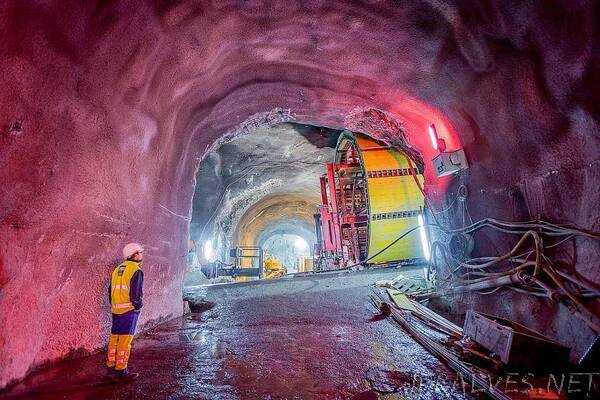
“A water battery capable of storing electricity equivalent to 400,000 electric car batteries will begin operating in Switzerland next week.
The pumped storage power plant was built into a subterranean cavern in the Swiss canton of Valais.
With the ability to store and generate vast quantities of hydroelectric energy, the battery will play an important role in stabilising power supplies in Switzerland and Europe.
What is a water battery?
A water battery or pumped storage power plant is a type of hydroelectric energy storage. The battery is made from two large pools of water located at different heights.
It can store excess electricity by pumping water from the lower pool up to the higher pool, effectively “charging” the battery.
When electricity is needed, the direction of the water is reversed. The flow of water rotates a turbine which generates hydroelectric power.
Hydro batteries are especially useful for storing excess energy produced by intermittent power sources such as wind, solar and nuclear. The energy is pumped up to the top pool in times of overproduction and can then be released to produce energy during periods of high demand.
Water batteries are the largest-capacity type of grid energy storage currently available.
Why has Switzerland built a huge water battery?
The Swiss power plant, constructed by the company Nant de Drance, will be put into operation on July 1st.
The plant has six pump turbines and a total power output of 900 MW, enough to power as many as 900,000 homes.
With a storage capacity of 20 million kWh of electricity, it is hoped the water battery will play a significant role in stabilising Switzerland and Europe’s energy grids.
During periods of high demand, such as during heatwaves, the battery can reduce the likelihood of a grid overload.
The engineering challenges of building a water battery
The battery is located 600 metres underground between the reservoirs of Emosson and Vieux Emosson in Valais.
It took 14 years to complete because of considerable logistical and engineering challenges. To create the plant, 18 kilometres of tunnels had to be dug through the Alps.
These tunnels allowed for the transportation of building materials and prefabricated buildings into the mountain.
At the heart of the plant is the vast engine room measuring nearly 200 metres long and 32 metres wide.
Between 2012 and 2016, the height of the Vieux Emosson dam was increased by 20 metres to allow the reservoirs to store more water and create more energy.”
